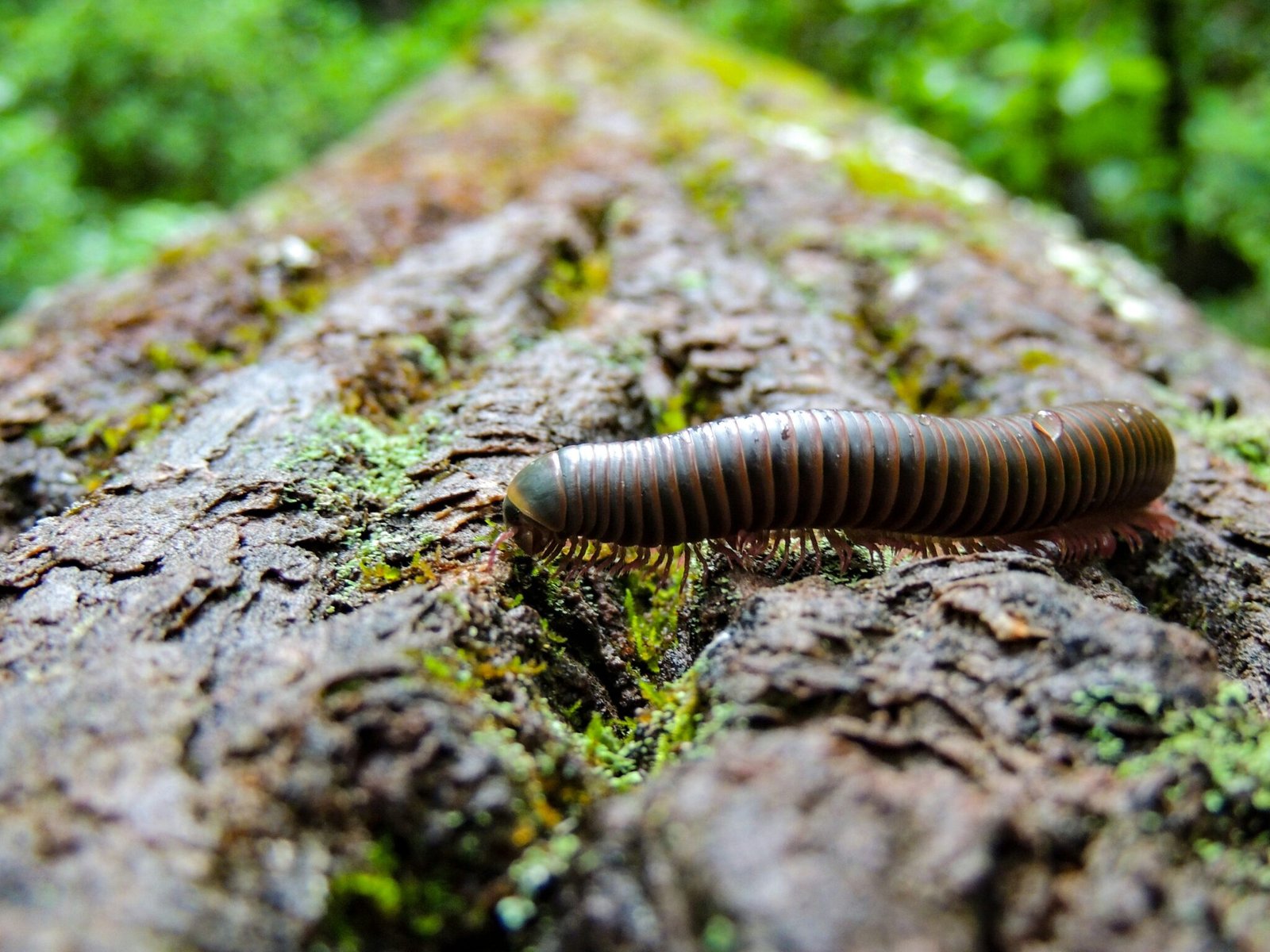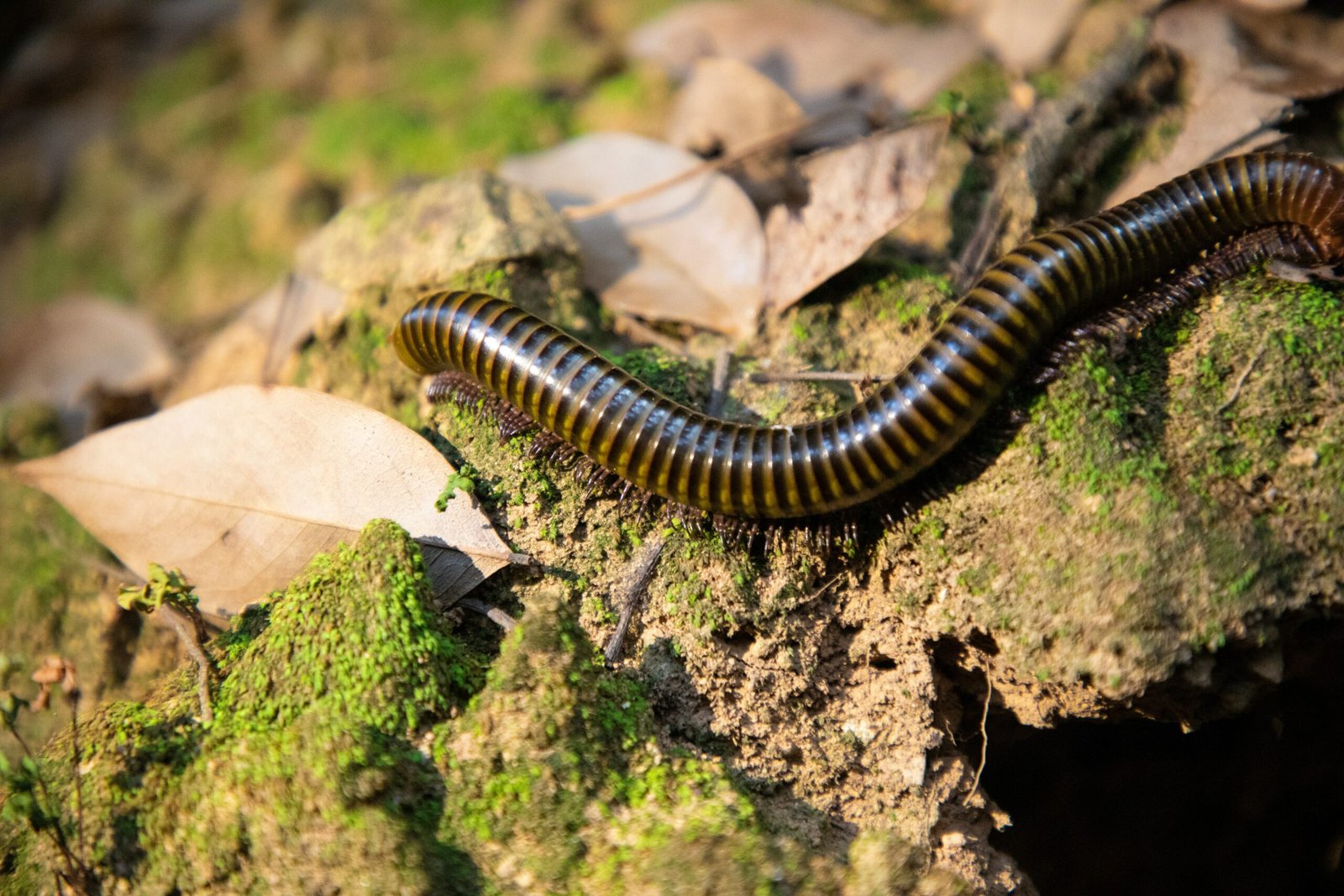Millipedes, often mistaken for their more dangerous cousins, centipedes, are generally harmless arthropods that occasionally make their way into homes. While they don’t pose significant health risks like some household pests, their presence can be unsettling and indicative of moisture issues. If you’re noticing these many-legged creatures in your living space, it’s important to understand their nature and know when to take action.
Overview
Millipedes are elongated arthropods with segmented bodies, typically ranging from 1 to 4 inches in length. Despite their name meaning “thousand feet,” most species have between 30 and 400 legs. They’re slow-moving detritivores, meaning they feed primarily on decaying plant matter. Millipedes prefer dark, damp environments and are often found in gardens, forests, and areas with high humidity.
The Impact of Millipedes
- Minimal Health Risks: Unlike many household pests, millipedes do not bite, sting, or transmit diseases to humans or pets. Some species may secrete a mild irritant when threatened, which can cause minor skin irritation in sensitive individuals.
- Nuisance Factor: While not harmful, the presence of millipedes indoors can be disturbing for many homeowners. They can also leave stains on floors or carpets if crushed.
- Indicator of Moisture Issues: A millipede infestation often signals excessive moisture in or around the home, which can lead to more serious problems like mold growth or structural damage.
- Garden Impact: In large numbers, millipedes can sometimes damage seedlings or soft fruits in gardens, though this is relatively rare.

Identifying a Millipede Presence
Millipedes are usually easy to spot due to their distinctive appearance. Look out for:
- Dark-colored, worm-like creatures with numerous legs
- Slow-moving insects curled into a tight coil when disturbed
- Accumulations in damp areas like basements, crawl spaces, or bathrooms
- Presence around the foundation of the house or in mulched areas outdoors
When Professional Help is Necessary
In most cases, millipede issues can be resolved without professional intervention. However, you might consider seeking expert help if:
- You’re experiencing persistent, large-scale millipede intrusions
- You’ve identified significant moisture problems that are attracting millipedes
- You’re unable to locate or address the source of the millipede infestation
- You have concerns about distinguishing millipedes from potentially harmful centipedes
Professional pest control services can help identify and address the root causes of millipede infestations, particularly if they’re related to broader moisture management issues.
Prevention and Control
Preventing millipede intrusions primarily involves moisture control:
- Reduce humidity in basements and crawl spaces with dehumidifiers
- Fix any leaks or drainage issues around the home’s foundation
- Remove organic debris like leaves and mulch from areas close to the house
- Seal cracks and gaps in the home’s exterior to prevent entry
- Improve ventilation in damp areas of the home
Conclusion
While millipedes don’t pose the same risks as many household pests, their presence can be bothersome and may indicate underlying moisture problems. Understanding the nature of these harmless arthropods and knowing how to prevent their intrusion is key to maintaining a comfortable living environment. By addressing moisture issues and implementing simple prevention strategies, you can keep these many-legged visitors where they belong – outside in nature. If millipede problems persist or you’re concerned about associated moisture issues, don’t hesitate to consult with a professional for a thorough assessment and targeted solutions.
